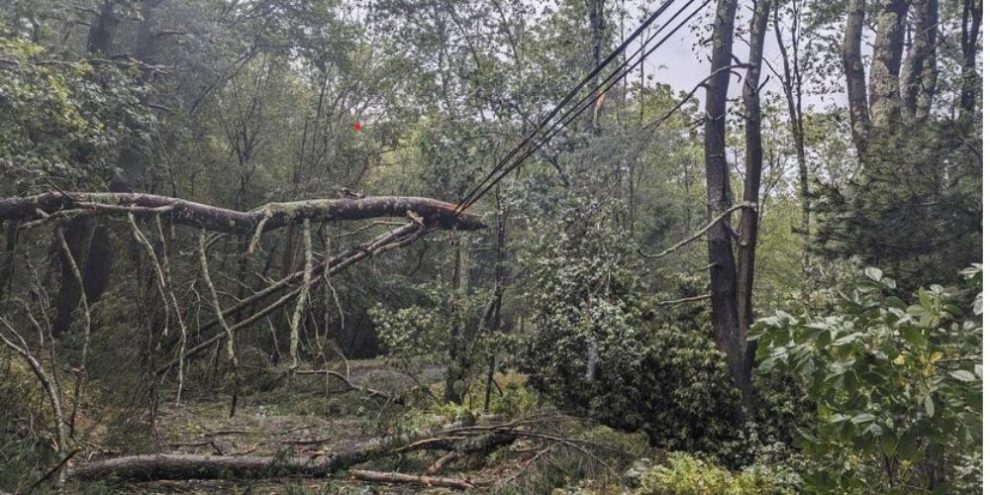
By Michael MacDonald in Halifax
Residents of western Nova Scotia and southern New Brunswick are being warned to prepare for power outages and localized flooding as hurricane Lee is expected to become a powerful post-tropical storm on Saturday when it makes landfall in the region.
The Canadian Hurricane Centre in Halifax issued a tropical cyclone statement this morning saying Lee's track could take the storm through an area anywhere between New Brunswick's Grand Manan Island and Nova Scotia's Shelburne County on Saturday night.
The centre has repeatedly stressed that even though Lee is expected to transition from a Category 1 hurricane to a post-tropical storm, it will remain a threat because the storm will expand and maintain much of its strength.
Environment Canada has issued hurricane watches for the southwestern Nova Scotia counties of Digby, Queens, Shelburne and Yarmouth, where hurricane-strength winds could gust as high as 120 kilometres per hour.
As well, a hurricane watch remains in effect for Grand Manan and the southern coast of Charlotte County in New Brunswick, where gusts across the Bay of Fundy could also reach 120 km/h.
Residents of Nova Scotia's Atlantic coast and those living near the Bay of Fundy in New Brunswick are also being warned that significantly higher water levels could lead to localized flooding and dangerous surf.
Along the Atlantic coast, breaking waves are expected to reach four to six metres. Rough conditions are also expected around the Bay of Fundy, Gulf of Maine and the southwest Maritimes marine district.
Earlier today, the Category 2 hurricane was 430 kilometres southwest of Bermuda, churning out sustained winds at 155 kilometres per hour.
Even though the storm will lose much of its strength as it moves north over cooler water, by the time it reaches the Maritimes, its strong winds and heavy rain will be felt up to 300 kilometres from its centre.
As a result, tropical storm watches have been issued for the western half of Nova Scotia and southern New Brunswick, including Saint John County, Fundy National Park and Moncton. These areas, which stretch as far east as Halifax, could see sustained winds of 60 km/h with gusts up to 100 km/h.
In advance of the storm, a separate weather system is already dumping rain over much of the region today.
"These bands are notoriously difficult to predict, but it is important to understand there is a flooding risk with these bands well before the arrival of Lee," the centre's statement said. "These complex effects are indirectly related to the hurricane. Additional rainfall from Lee itself could exacerbate the risk of flooding."
Early in the afternoon, a severe thunderstorm watch was issued for the Halifax area.
With the latest changes to Lee's predicted track, meteorologists say the threat of heavy rain from Lee has shifted to western Nova Scotia, central New Brunswick and northward into Quebec's Gaspé region and the province's Lower North Shore.
Rainfall totals in excess of 100 millimetres are possible, especially in areas to the left of the storm's track.
This report by The Canadian Press was first published Sept. 14, 2023.





